Management Stories From North America's Northern, Northern Woodlands
When I say “northern Quebec” to most people, I either get blank looks or they say something vague about how European it is – they think I’m talking about Quebec City. Even to many Quebecers, anything north of touristy Lac Saint-Jean is a bit of a mystery. Most maps end there. The one major road north points towards Chibougamau, a sort of last outpost before the frontier.
If I keep pushing, “No, north. James Bay. The boreal forest,” the looks may change from blank to whimsical. I’ll have conjured the mythic north: a vast, uninhabited terra nullius, a place of freedom and emptiness that feels, perhaps, like the western U.S. felt 150 years ago. Sometimes, when I’m talking to a person who remembers the activism over hydroelectric dams in the 1980s, I’ll get a furrowed brow – an acknowledgement that settlement has come at the expense of the indigenous people.
Leave the Lac Saint-Jean valley, and dairy farms that would look at home in New England immediately give way to vast forests of black spruce, balsam fir, jack pine, white birch, and poplar, the road dipping and rising over glacial deposits. On the three-hour drive from Lac Saint-Jean to Chibougamau, the feeling of isolation, the dense, green presence of the forest, is inescapable. Yet, equally obvious is the presence of natural resource development. The logging trucks loaded with skinny black spruce and the high-tension power lines supported by steel towers come from even farther north, proving that, despite what the maps might show, Chibougamau is only the start of northern Quebec. Beyond lies a huge expanse of forest, rivers, lakes, First Nations communities, mining towns, sawmills, logging roads, hydroelectric dams, mountains, bugs, moose, and caribou. At some point the trees thin out, signaling entry into the taiga, and then the tundra, where far northern Quebec begins.
It takes about 12 hours to drive from northern New England to Chibougamau, but we need not leave our homes to feel a connection to this region. Northern Quebec is known as the wood belt, and for good reason. Twenty-five percent of the world’s natural forest is in Canada, and the country is the world’s leading lumber, pulp, and paper exporter. As such, there’s a good chance there’s a two-by-four in the building you’re sitting in that’s stamped “Fabriqué au Québec.” The same origin holds true for the roll of paper towels on your kitchen counter.
If you live in New York or New England, there’s also a chance that the power for the light you’re reading by is generated in northern Quebec. From Hydro-Quebec’s generating stations and reservoirs in the far north, high-voltage power lines, supported by some 14,000 towers, run south over 3,600 miles. Half of Hydro-Quebec’s exports come to New England, and another quarter go to New York. Twenty-eight percent of Vermont’s electricity – every fourth light switch you flip – comes from Hydro-Quebec. Currently, new lines are planned to Deerfield, New Hampshire, which will bring electricity to one million more customers. As a carbon-neutral energy source, experts say that these new lines will help New England meet one-third of its greenhouse gas emissions goals.
But there’s a lot more to this region than the natural resources we use in our houses. Quebec hosts one of the world’s largest concentrations of woodland caribou, along with other at-risk species such as wolverine, lynx, and golden eagle. Thirty percent of the world’s boreal forest grows there – forests that clean and recycle much of the earth’s fresh water, that act as the lungs of the world, driving the seasonal changes in atmospheric carbon dioxide levels. We don’t have to consume two-by-fours or electricity to be connected to this region. All we need to do is breathe.
I spent six weeks in the James Bay region of northern Quebec this summer, researching the environmental and cultural effects of the forest management in the region. I wanted to see firsthand how the 10-year-old Paix des Braves agreement – a plan meant to phase out large clearcuts in favor of smaller, patch cuts – is affecting the landscape. I wanted to see the spidery system of roads built by the logging companies to access these blocks. I wanted to talk to Cree hunters about the changes to their lands, to forestry company representatives about the silvicultural strategies they use, and to workers from the Quebec Ministry of Natural Resources about their mission to both manage the region’s complex forest system and supply wood to the forest products industry.
More than anything, I wanted to observe the meetings of the Forestry Joint Working Groups in the Cree First Nations communities affected by logging. These meetings bring all of the players together around one planning table; they’re usually trilingual and generally quite tense. Forestry issues can be contentious enough in the Northeast, where protocol is pretty much established and everyone speaks the same language. How are land use decisions made concerning Canada’s boreal forest, a place that the Cree see as hunting and trapping grounds and a source of cultural identity, that industry sees as the world’s wood basket, and that environmentalists see as the Amazon of the North?
Eeyou Istchee
The James Bay region – the vast boreal region around the southern tip of Hudson Bay – is roughly the size of Germany. It’s the land of powerful rivers that fall off the granite plateau of the Canadian Shield, of wide muskegs and shallow, reedy lakes whipped into white caps by afternoon winds. Despite its ancient bedrock, it’s a young landscape, freshly emerged from glaciers that left round kettle ponds, winding esker ridges, boulder fields, and fine sandy banks and beaches. The forest is predominantly black spruce: tall, straight, densely packed trees, often with a thick mop of needles and cones at the very top, bending heavily with the wind. The black spruce skyline – with a backdrop of gray clouds ready to drizzle for five days, or the pale green of a late night in June, or the vivid blue after a March snowstorm – is the quintessential James Bay view.
This is a landscape that has developed in the presence of wildfire. Fire is the largest natural disturbance in James Bay, returning nutrients to the soil and opening up space for the new growth of sun-loving species. Areas that have been burned turn quickly to brilliant pink fireweed, lowbush blueberries, birch, and poplar. Even the ubiquitous mat of sphagnum moss that covers the forest floor is burned in the hottest fires, the once ever-wet and squishy ground becoming dry and crumbly underfoot. The fires can be so extensive that when the wind drifts south, smoke can cloud the skies all the way to southern New England.
Nine James Bay Cree communities call this landscape home and have done so since time immemorial, if you ask them, and for the past 2,500 to 3,000 years, if you ask archeologists. Waswanipi, Oujé-Bougoumou, Nemaska, and Mistissini are located inland, and Waskaganish, Eastmain, Wemindji, Chisasibi, and Whapmagoostui are along the coast. There are roughly 18,000 James Bay Cree today, and the population is steadily growing.
Traveling in what the Cree call Eeyou Istchee, The People’s Land, one can’t help but be amazed at the resilience of this culture. There are trilingual stop signs; Cree is spoken at every street corner, at every meeting, by every generation; there are meals of goose, beaver, moose, bannock, blueberries, and fish; cooking tents behind many of the houses; and ceremonies to celebrate a child’s first steps outside. But there are also hockey arenas, television sets, hot dog stands, and all the other trappings of a 21st century society.
The balance between tradition and modernity in Cree culture is constantly shifting, which complicates an already complicated land-management system involving multiple governments, cultures, and languages, political agreements, and players with widely differing values and ways of thinking about the world.
In Cree society, no one owns property, per se, but the land base is broken up into family hunting territories, called traplines. Each trapline is large enough to support the needs of the extended family, which means that the territories further north, where productivity is lower, are significantly larger than those in the south. On average, traplines where there are forestry operations are 280 square miles each, about a quarter of the size of the White Mountain National Forest.
Each trapline is managed by the senior hunter of the family, the tallyman, a much-respected position in Cree society, with considerable responsibility. Tallymen are land stewards, ensuring that areas are not over-hunted, that meat is shared among family members, and, today, that forestry operations or other development do not disrupt the Cree way of life. Traplines are passed from generation to generation, from tallyman to the most promising son or nephew, and thus education is also an important tallyman responsibility.
Each trapline, and thus each family, is associated with the nearest Cree community. All nine communities have a band council and a chief who oversee almost all aspects of community life, from education to cultural activities to road construction, and each has a different feel: the tree-lined streets and quiet isolation of Nemaska, the government housing and political activism of Waswanipi, the ever-expanding modernization of Mistissini.
All of these communities have representation in the Grand Council of the Cree, based in Montreal and Quebec City. The Grand Council is currently led by Grand Chief Matthew Coon-Come, from Mistissini, who has been involved in Cree politics for decades.
In 1975, the Grand Council signed the James Bay and Northern Quebec Agreement, a comprehensive treaty with the Cree and the Inuit. Besides allocating specific land to these communities, it covered economic development across the territory, defined land use rights, established governmental, social, and cultural institutions, and set up a fiduciary relationship between the native communities and the provincial and federal governments.
This agreement reduced Cree territory by 93 percent – from 400,000 square miles to 27,140 (an area larger than Texas down to an area smaller than Maine) – and brought significant change to the region: permanent Cree communities, a Cree governance structure, an inflow of funds from Quebec and Canada, and a land management system that divides historical Cree territory into three categories. Category I land (2,140 square miles) is federally owned but Cree controlled; this is the land surrounding the Cree communities, similar to US reservations. Category II (25,000 square miles) is Crown land, where the Cree have exclusive hunting and fishing rights, but where development such as logging may also take place. Category III (350,500 square miles – nearly 60 percent of the province) is managed like the rest of Quebec, with only a few specific hunting and harvesting laws differentiating native and nonnative uses. There are signs as you enter or exit these land categories, and they are well understood in the region, an example of how life and land are defined by political agreements.
Even though we might call James Bay “Cree land,” or Eeyou Istchee, and even though land management is a multiplayer issue, this land is legally owned by the province of Quebec and the country of Canada. In fact, 90 percent of all Canadian forestland is owned by the government. These public holdings are called Crown Land, and to be technically correct, they’re owned by Queen Elizabeth II (though she’s not allowed to sell any of it). Logging companies, mining companies, and hydroelectric companies – as well as individuals looking to build a house or camp – rent from the government. Needless to say, these Crown Lands generate significant treasure; forest sector revenues alone produced $57.1 billion for Canada in 2011.
The Conflict
Before the James Bay and Northern Quebec Agreement, the Cree lived largely as they had for hundreds, if not thousands, of years. They spent most of the year out on their traplines, hunting, fishing, and trapping, moving camp often, traveling long distances by canoe, dogsled, snowshoes, and later four-wheeler and snowmobile. The longest journeys came at the start of the summer, when the Cree gathered to visit and trade in the places that would become today’s nine communities. In the fall, the families would part ways, heading back out to their territories before freeze up.
Things have changed.
I try to keep up with tallyman Paul Dixon, as he charges across bare ground, rutted by a recent timber harvest. Ponytail flapping, he navigates between stumps and branches, toward a buffer of black spruce surrounding a small lake. This used to be a canoe portage, and Dixon finds small signs to guide him – signs that I can barely detect through the more obvious marks of logging.
Dixon and I spent the morning driving from cut to cut on his land, finding new logging roads, watching a feller-buncher harvest mature trees, and narrowly avoiding flats of tree seedlings laid out for watering. Between stories of past harvests gone awry, rants against Barrette-Chapais – the largest sawmill in Quebec, located just 30 miles north – and reflections on what this land used to look like, Dixon’s real focus of the day emerged: moose. Hunting season was just around the corner, and he noticed tracks – from which he deduced age, sex, size, direction of travel, foraging ground – everywhere we went.
When we reached the lake, Dixon scanned the far shore with binoculars, looking for moose, but also for a camp on the far point, the last place where he and his father slept outside together. He told me that he will always remember his dad as the greatest hunter in the world. And he wonders if his son will remember him – a lifelong hunter with a fulltime office job – this way, too.
Back in his black pick-up, he waves his hand at the barren landscape and says, in a way that’s both a question and a statement of fact: “As a Cree from a hunting society, am I in a dilemma?”
There are a whole host of issues complicating the management of this boreal forest, but at core you have Cree, who are still, despite the trappings of modern life, a hunting society, and Quebecers, who are part of a capitalist society. One cares about game, one cares about monetizing a resource. When these two desires align, there’s relative peace. Where they conflict, there’s tension.
Hydroelectricity and mining are both big industries in the James Bay region, but the environmental impacts of the first are mostly past and of the second are mostly yet to come. In both environmental and economic terms, wood is king. The logging industry that has been a part of life in southern Canada since the nineteenth century didn’t make its way to James Bay until the 1950s, when mining opened roads to the north. Hand felling and stripping gave way to feller-bunchers and grapple skidders in the 1980s and 1990s.
Increased mechanization, increased demand for wood, and lenient or nonexistent environmental protection led to widespread clearcuts. Typically, loggers would clearcut 1,000 acres and only leave the requisite 660-foot buffer before the next 1,000-acre clearcut, over and over.
“It was cut, cut, cut,” explained forest manager Jean-Pierre Boudreault of the sawmill Chantiers Chibougamau. He used a French idiom meaning “to roll out the carpet” to explain how the companies moved their operations steadily north. As an experienced manager and planner at Chantiers, Boudreault is in charge of planning the company’s harvesting locations and schedule, transferring the plans on the map to the men and machines on the ground, and communicating with the Ministry of Natural Resources and the affected Cree tallymen. Chantiers, established in 1961 in the rough copper-mining town of Chibougamau, went from an annual yield of two million board feet its first year to 200 million in 2001. To put this in perspective, the recent annual sawlog and veneer harvest in the entire state of Vermont was 180 million board feet.
“For industry, the nineties were good years because of the financial situation,” explained Patrick Garneau, Boudreault’s counterpart at the Tembec sawmill in the industrial outskirts of Senneterre. “We had good prices for lumber (two-by-four), wood supply was okay, and we had a good (low) cost for our wood supply (forest to mill).” These were the good old days.
To get a sense of the scale of the landscape alteration firsthand, you can go to Google Earth and type in Lac Mistassini, Quebec, Canada. Scroll to the east and the landscape looks less like a forest in any broad sense of the word, and more like a network of farm fields. To many in the logging industry, this was precisely the point. Proponents of this agricultural model of forest management pointed out that The James Bay area is largely unpopulated and grows a lot of trees; as such, it makes sense for Canada to use this resource.
But, of course, the Cree saw it differently as clearcuts, logging roads, and nonnative hunting cabins spread into Eeyou Istchee. Development was piecemeal, with some tallymen trading land rights for boats, snowmobiles, or access roads. The electricity, sewer systems, and paved roads promised by the James Bay and Northern Quebec Agreement were slow to materialize. Even those within the logging industry remember those days as a time of environmental indifference. “It was terrible,” Boudreault told me. He recalled equipment abandoned on every cutting block and garbage everywhere, to the point where he could fill up his pick-up each time he went to the forest. Waswanipi’s forestry administrator, Allan Saganash, showed me binders filled with photos he took during this time of hunting cabins surrounded by nothing but stubble, eroding gravel pits, contaminated streams, and poor or entirely absent regeneration, each photo a story of mismanagement and environmental disregard.
The Paix des Braves
As Category II and III lands were steadily clearcut, Cree leaders, especially in Dixon and Saganash’s southern community of Waswanipi, became outspoken with their frustration towards what they saw as a lack of forest protection in the agreement. “In the 1990s, they had no obligation at all to consult the Cree,” Saganash said. Born and raised in the bush, he has been involved in forestry issues from the beginning, even before there was a formal process in place. Geoffrey Quaile, senior environmental advisor to the Grand Council, remembers days “when a guy in a logging truck would pull up and say to a trapper, ‘Hey, we’re going to be logging here this winter, you should probably get your traps out.’”
In 2002, Cree frustration and public pressure to improve forestry practices led to a new agreement between Quebec and the Cree. In the Paix des Braves , the Cree gained a voice at the planning table in exchange for surrendering the Rupert River, at the time a major thoroughfare from the inland Cree communities to the James Bay coast that was subsequently partially diverted into the La Grande hydroelectric complex. The treaty was a chance to rethink management of the region.
The Paix des Braves included an adapted forestry regime that addressed the mounting ecological concerns. This new regime, which I saw firsthand on Dixon’s trapline, is known as mosaic cutting. The cuts still resemble clearcuts – picture a big clearing with a few standing, unmarketable poplar trees scattered about – though the soil is not always intentionally scarified. And the mosaic openings are substantially smaller than the 1,000-acre clearcuts of the past. Forty percent of cutting blocks must be less than 125 acres, and none can be more than 250 acres, a substantial change from past practices. And rather than having skinny little buffer strips, cuts are arranged more like a checkerboard, the uncut blocks as large as those that are cut. Larger buffers along shorelines and riverbanks are also required. The rationale is that multiple small cuts would affect each tallyman and his family to the same extent at the same time, but no one’s land would be hit too hard.
In addition to mosaic cutting, the Paix des Braves established the forestry Joint Working Groups, which put Cree forestry administrators and Quebec Ministry of Natural Resources representatives together as one team in negotiation with logging companies and tallymen. The Joint Working Groups put Cree concerns and economic concerns on the same table, quite literally, with all of these players leaning over each other to see and alter and discuss the same set of forestry planning maps. These meetings bring the operations of a province down to the details: Cree and their goose camps, the Ministry representatives and their satellite images, the loggers and their feller-bunchers.
The Paix des Braves requires protective measures that ensure the continuity of Cree land use and management. To start, the productive area of each trapline is calculated, and disturbance that is less than 20 years old – whether logging or wildfire – may not exceed 40 percent. When it reaches 40 percent, the area is closed to further activity to allow for regeneration, opening only when it meets the requirements for regrowth. Tallymen may set aside 1 percent of the trapline’s productive area for sites of cultural interest (hunting camps, bear dens, burial sites, canoe routes), 25 percent as important wildlife areas (usually moose yards and corridors, waterway buffers, or goose-hunting lakes), and an additional 185 acres for firewood harvesting. The Ministry of Natural Resources also designates biological refuges, old growth stands, and other areas of special ecological interest where harvesting is limited.
Industry reaction to the Paix des Braves was mixed, as might be expected in an area so dependent on natural resources. “In Quebec, people want to respect environmental issues, but they live from the forest in the region, and they are aware that if there is an impact maybe I will lose my job, maybe my dad will lose his job,” said one ministry official.
From his office at Chantiers Chibougamau, Boudreault tells me, his explanation peppered with Quebecois expletives, that mosaic cutting is expensive. “The biggest financial impact is the road construction,” Garneau confirmed, for logging companies must build and maintain new roads and bridges to reach all of these forest patches. This also means greater hauling distances to the sawmills. It means establishing summer-long field camps to house and feed crews of tree planters in remote corners of the territory. For companies driven by volume, and whose subsequent leases rely on maintaining their harvesting level, having to go farther afield not just once, but time and time again, to cut a reduced volume of wood, was not a welcome change.
And yet, over the past 10 years, most in the industry have come to accept mosaic cutting and the other stipulations of the Paix des Braves. While the regulations are strict, that strictness allows the companies to avoid the political backlash that they experienced in the nineties. As Garneau told me, “It’s easier to plan with clear rules.”
Many sawmills and timber companies found that the agreement dovetailed nicely with the forest certification standards being pushed by environmentalists. A few years ago, Chantiers Chibougamau went through the process of Forest Stewardship Council (FSC) certification, a stamp of approval that tells consumers that the wood is harvested sustainably. Gaining FSC certification is a process that usually takes a company several years, yet Boudreault told me with pride that it only took Chantiers eight months. “FSC, it’s a copy of Paix des Braves,” he said, putting out both hands as if to weigh one against the other. “One of the biggest principles in FSC is to take care of the native people, and we were already doing this.” Today, FSC, the Sustainable Forestry Initiative, and the Canadian Standards Association certify most of the wood coming out of the James Bay region.
The Catch
This doesn’t mean that the forest products industry embraces every aspect of the Paix des Braves. For example, loggers have a practical problem with the requirement to leave the forest floor undisturbed. A thick mat of sphagnum moss covers much of the forest floor in James Bay. Naturally, this mat burns in forest fires, exposing the mineral soil that black spruce seeds need to germinate. Loggers mimic the effects of wildfire by scarifying the soil with large machinery, as a farmer might plow a field. But the Cutting with Protection of Regeneration and Soils (known as CPRS) that is part of the Paix des Braves requires that the organic mat be left intact. The idea is to not harm young seedlings, but this method can actually inhibit growth, as it is hard for trees to contend with that much organic material. It can also exacerbate paludification, the process by which moss retains so much water that a forest gradually transforms into a bog.
And it doesn’t mean that those in the environmental community see the agreement as peak evolution either. From the perspective of many ecologists, there’s still too much harvesting mgoing on in James Bay. Daniel Kneeshaw, a professor of biology at the University of Québec at Montréal, is an expert on natural disturbance dynamics of the boreal forest, as well as on First Nations forestry and alternative forest management. He, along with other forest ecologists, argues that mosaic cutting was always more about meeting the social needs of the Cree and the political needs of Quebec than about addressing ecological concerns.
There is mounting concern about the unintended ecological ramifications of mosaic cutting, as mosaic management puts the forest on a short rotation. Rather than using large cuts to reach the annual allowable cut, a number set by Quebec’s chief forester, and then leaving those areas to grow for 90 or 100 years, the companies cut less but more often under a mosaic regime, harvesting all across the territory every year. This requires a more extensive network of roads than clearcuts did, and in the end means a larger disturbance of the forest.
According to biologist Nicole Fenton, a specialist in boreal forest dynamics, mosaic cutting does not reflect the ecological reality of the boreal forest, a reality driven by wildfire cycles that can vary from 50 to 400 years. “The natural dynamic is not to burn every 90 years systematically,” Fenton said.
Ecologists worry that the mosaic cutting is significantly changing boreal forest structure, especially when it comes to old growth and uneven-aged forest. They also worry that it’s altering the composition of the boreal forest, allowing balsam fir to take over where black spruce once grew, due to differences in how those species regenerate, a shift that may be amplified by climate change.
As if the issue wasn’t complicated enough, there’s one more player that the ecologists are worried about – caribou. The shift from vast clearcuts to mosaic patches has led to significant landscape fragmentation. Since 2002, between 12,000 and 18,000 miles of new roads have been built through forests, across bogs, over creeks, and around mountains.
James Bay is home to three of the last remaining herds of woodland caribou in Quebec, and this nonmigratory species, considered threatened in Canada and vulnerable in Quebec, needs vast stretches (about 150 square miles) of mature conifer forest to thrive. Not only is James Bay’s mature forest declining due to mosaic harvesting, but the caribou’s dislike of roads leads to what ecologists call functional habitat loss. And then there are the increased hunting cabins, poaching, and predation that the roads bring.
“Once you build a road, it opens up the territory,” explained Saganash, who, as forestry administrator, finds road and cabin disputes filling his time. On the table in front of him is a map of all the nonnative hunting cabins on Waswanipi territory. There are more than 700, making the map so hard to read that it seems like it was produced almost as a joke: a very political, uncomfortable joke. “We need to prevent access. That’s what is important,” said Saganash, speaking for both the Cree and, unintentionally, the caribou.
A recent study by researchers at the University of Québec found that the threatened caribou herds in James Bay are still declining. Part of the population loss results from native use, for the Cree hunt caribou year round and have for centuries, but the researchers conclude that “the ultimate cause is attributed to landscape transformation.” Too much land has been disturbed, they argue, and current rates of harvesting and road building need to be curtailed.
The Friction
So what do the Cree think of the current state of forest management? Well, it depends on who you talk to, what generation they belong to, whether they hunt on foot or by truck, how inaccessible or far north their trapline is, whether their son’s road construction company has seen steady work on logging roads, how involved they are in local and Cree Nation politics.
Sometimes the divide between the Cree and those in the forest products industry cleaves along predictable lines. Tallyman Edward Ottereyes, for example, expressed vehement opposition to the construction of a bridge over the Maicasagi River because it would disrupt a sturgeon spawning ground and because he knew that every native and nonnative with a pick-up truck would be up on his trapline hunting moose come fall, shooting geese come spring.
Boudreault, in charge of planning this road for the Chantiers sawmill, saw Ottereyes’ point, saying, “It’s terrible, because everyone can go there, and it’s so close to Waswanipi.” But, Boudreault told me, “If we want to be economically stable ... for us, it’s [75 miles] less” to cross the Maicasagi than to go around. And so the bridge was built.
But to say that the Cree are against roads and logging is too simplistic. Ottereyes’ son, in fact, wanted the Maicasagi bridge that his father opposed. He argued that his father didn’t hunt anymore, but that he and his brothers did – by truck. He wanted access to the land north of the river, even if that meant sharing it with Chantiers’ logging operations.
In my six weeks in James Bay, many of the requests I heard made at the forestry consultation tables were from tallymen who wanted more access roads to lakes, road improvements, grading, pick-up truck turnarounds, or washout repairs. In a strange twist that I struggled to understand despite seeing it play out over and over, tallymen often wished for logging on their land, not far from places they hunt the most. When asked to weigh in on two different road options at a forestry consultation meeting, one tallyman said, “I don’t care, as long as it is a good road for me.”
It’s also too simplistic to assume that the Cree and the ecologists agree about forest health matters. A case in point would be the region’s burgeoning moose population. As is often the case in nature, one species’ loss is another’s gain. The mosaic forest that stresses the caribou turns out to be favorable for moose. And, as ecologist Fenton pointed out, “Everyone wants good moose habitat on their trapline.” By pairing small cuts and residual forest, mosaic cutting provides just the combination of food and shelter that moose need. This is wonderful if you’re a moose hunter and awful if you’re concerned about caribou.
To be clear, the Cree are concerned about caribou, too, and have proposed large areas – some of the last unlogged forests in the region – for their protection. But there is a fundamental difference in worldview at play here, such that the Cree and ecologists disagree over issues like sufficient regeneration height, the definition of high-value forest, or the appropriate time to harvest. “A biologist and a Cree with knowledge of the land – one person studies it in school, one person knows it from being on the land. So who do I believe?” asked Saganash, the forestry administrator.
The friction between the Cree and the Quebecers on both sides of the resource management divide plays out in meeting after meeting, in community after community. Cree tallymen might agree to the harvesting of a certain patch of trees, but unlike those in the timber industry, they have no need or desire to ensure that the forest produces at a certain rate. They may stand with the environmentalists on the need for a lower annual cut, but balk at the idea of regulated hunting quotas.
While many Cree have joking, teasing, laughter-filled demeanors, when it comes to the politics of the region, there is palpable resentment toward the extractive use of James Bay’s resources. “This is Cree land. These are Cree people here,” an exasperated Saganash reminds the Ministry and logging company representatives at almost every meeting, lest they think that the allowed 1 percent total protection and 25 percent partial protection are enough.
And there’s a keen understanding of the broader system of consumption that drives this extraction, the consumption by all of us “down south” across the border. “All the trees go down south, all the electricity goes down south,” said Joseph Neeposh from his front porch on the Waswanipi River. “All that doesn’t do anything for us Cree,” he said, waving his hand toward broken tent frames and flapping tarps. He expressed the sentiments of many older Cree, the ones who have seen this entire process unfold in their lifetimes.
But simultaneously, most Cree view the natural resource based economy of the region very practically. You don’t find many Cree wishing the James Bay and Northern Quebec Agreement had never been signed, despite the logging and mining and hydro-related flooding that came along with it. Without the treaty, Cree rights wouldn’t be protected under the Canadian constitution. There would be no secondary education, health board, income security program, or trappers’ association. No college educations. No dialysis machines. The Cree are a twenty first century people. The balance they are striving for today – between village life and bush life, between cultural, ecological, and economic sustainability, between modernity and tradition – is different from the years before the agreement.
“The Cree way of life is not something that is fixed in time,” said one Cree official. “The old way of life – hunting, fishing, trapping full time – is the way of life for very few people. So now the Cree way of life includes forestry roads, driving everywhere in trucks. Things evolve.”
Tallyman Murray Neeposh pragmatically summed up the balancing act by telling me, with a twinkle in his eye, that he was fundamentally opposed to a logging company building a road on his trapline. But if they did, he’d probably open a gas station.
The Future
In light of the ecological concerns about mosaic cutting, the Quebec government is now considering a new approach to ecosystem management that would attempt to strike a better balance between economic stability and ecological integrity. Currently, the Cree and Quebec are deadlocked in negotiations.
Ministry representatives in charge of promoting the new system explained that the main goal is to reduce the gap between the managed and the natural forest by mimicking the natural disturbance of wildfire. Given the scale of natural wildfire, this could mean harvesting blocks as large as 25,000 acres, bigger even than the largest cuts of the 1990s. Each large cut would leave 125- to 500-acre tree islands connected by 1,640-foot corridors, which together would make up 20 percent of each cut, or even more, if the Cree negotiate for increased protection. After cutting, harvested areas would be left alone for many, many decades, allowing for the regeneration and succession that would naturally follow a forest fire. In addition, thirty percent of the territory would be kept as forest. Ecosystem management echoes the larger conservation movement’s commitment to a more holistic approach to forestry – to managing the whole system. The Cree have yet to accept the Ministry’s plan. Quaile, representing the Grand Council in these negotiations, is skeptical. “Is this really based on the ecosystem needs of the forest? Or is this based on capturing more wood for the companies?” he wondered aloud. Quaile isn’t even sure if ecosystem management is possible. “The system of ecosystem management that they wanted to use would’ve mworked well in an undisturbed landscape,” he argued. “But it is very difficult to mimic nature in a landscape that’s so drastically fragmented by decades of industrial logging.”
Many of the Cree’s arguments against the proposed regime are cultural. They fear that ecosystem management would strip tallymen of their stewardship rights, undo the progress of the past decade, and bring back the exact problems that the Paix des Braves was set up to remediate. “They’re stepping back, going back to 2002,” said Saganash, afraid that everything he’s worked for in Waswanipi is about to be undone.
What’s not part of the negotiation is the annual allowable cut and that, according to many of the players, is a huge mistake. Ecologists point out that mosaic cutting can be done well. If you don’t harvest too much, you can keep old growth, you can keep the equilibrium between coniferous, deciduous, and mixed forests, you can have uneven-aged stands. This only works, though, if the harvest rate is not too high.
Cree representatives agree. “You can never make forestry compatible with the Cree way of life,” said Saganash, but less cutting would certainly help. In fact, after running models with various forestry options for tallymen to evaluate, ecologist Kneeshaw is advocating that the annual cut be reduced by as much as half on native lands.
Those in industry point out, however, that the annual cut has already dropped significantly, as much as 20 to 30 percent in the last 30 years. On top of that decline, Quebec’s forest products industry is not booming; Fenton reports that “over the last five years, considerably less than the annual allowable cut has been harvested each year.”
These are no longer the days when there were mills at every lake. Today, Tembec Senneterre harvests half of what it did in 2000. A good part of this is because the housing market in the U.S. has tapered off; another part is due to increased environmental protection. Although Canada remains the world’s largest exporter of forest products, sales plummeted from $88 billion in 2005 to less than $54 billion in 2010.
Garneau predicts that the annual allowable cut will continue to decrease with time. “If we put in some other rules for caribou, we have to lower the annual cut. If the Crees negotiate bigger buffers, we have to lower the annual cut.” In addition, in the coming multiyear forestry plan, the annual cut will be reduced to account for the requirements of FSC certification, which is becoming common among sawmills across the territory. “I see a much reduced industry going forward,” said Quaile. The stacks and stacks of lumber, processed but unshipped, lying in the yards of every sawmill I visited this summer seem to corroborate his prediction. Some perspective is important, though. Barrette-Chapais, the mill just north of Dixon’s trapline, still processes 300 million board feet annually, leading to sales of over $500 million each year.
The Balancing Act
What all of this means for the boreal forest remains to be seen. In the big picture, Quebec’s $80 billion dollar Plan Nord – an economic, social, and environmental development plan that aims at creating 20,000 jobs per year for the next 25 years – will increase lumber, energy, and mineral sales from the region. This means cutting more trees, pushing vanadium and uranium exploration, and damming more rivers. (Hydro-Quebec’s major focus at the moment is on the Romaine River, which flows off the Labrador plateau and into the St. Lawrence.) Part of the plan for the region is increased tourism, though it’s hard to imagine wanting to vacation next to humming transfer stations or all night harvesting operations. The campground where I stayed this summer was an embodiment of this tension between tourism and industry, as campers sought to enjoy the north woods while right next door helicopters transported racks of mineral cores to a large staging yard.
Down at ground level, the larch in the bogs have gone from green to gold to bare. The geese have flown south. The Cree hunters have opened their winter camps – strung fish nets under the ice, set traps for thick-furred fox and marten, begun the long process of tanning moose hides from the fall’s hunt. The loggers have begun constructing their winter roads and hauling logs that were cut and stacked this summer. The caribou have moved to their winter grounds, wolves in tow.
Everywhere you look there’s a balancing act, though blink your eyes and the balance point shifts. I don’t know if the rabbits will thin the newly planted jack pines from under the snow – the logging companies that planted them think and hope they will, but the Cree say that the rabbits don’t like their taste. I don’t know if they’ll make progress in the next round of forestry consultations, or if a strike by Waswanipi’s tallymen will spread to other communities and stop the whole process. I don’t know where the fulcrum point of this balance is. I’m not sure anybody does.
What I can predict is that come spring, the ice will go out, the sphagnum moss will reemerge in the forest, and natural and man-made disturbances and dynamics will continue to juxtapose in James Bay, revealingly, sometimes alarmingly. At least for now, that tension is as much a part of this region as the black spruce forest it’s all based on.


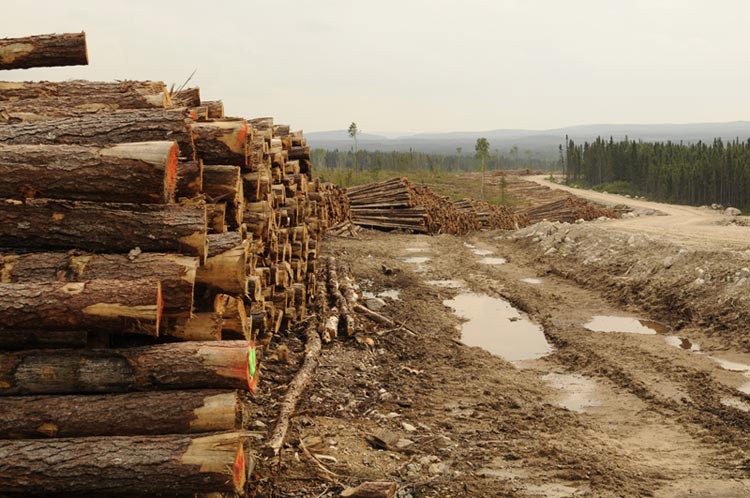
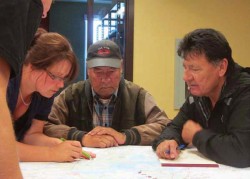
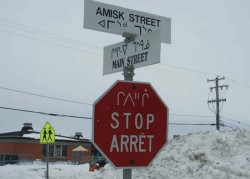
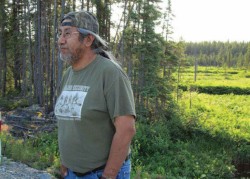
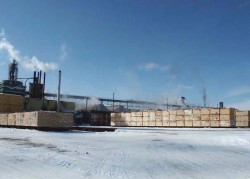

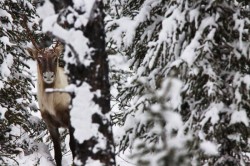
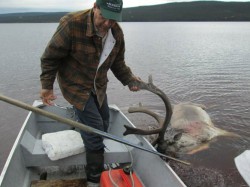
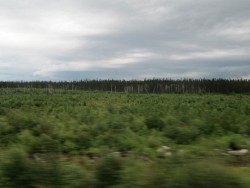



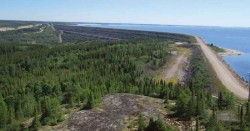



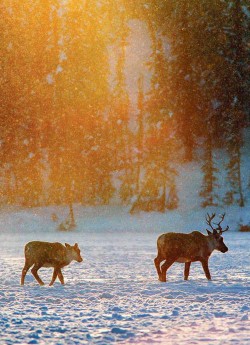
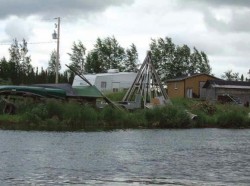
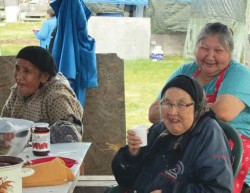
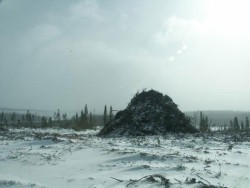
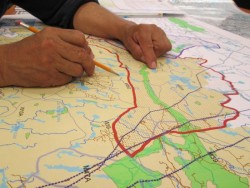
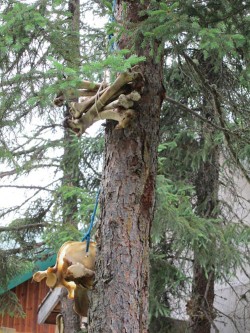


Discussion *